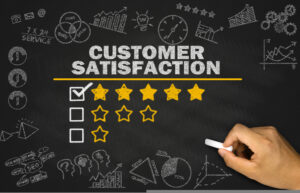If you follow the market, you read about the death of retail nearly every day. We are told that retail is in a constant decline, that consumers are buying everything online, and wise investors and nostalgic shoppers alike should say goodbye to these once-beloved institutions. The pandemic has hastened trends that are impacting retailers across multiple lines of business. Retail bankruptcies have claimed storied institutions (JC Penney and most recently Fry’s Electronics) while also taking down smaller and newer brands like Francesca’s Collections.
But is this the whole truth? What’s next for retail?
It is true that the pandemic strongly affected brick and mortar retail channels. Even prior to the past year’s unforeseeable impact, retail chains had been struggling with consumers’ rapidly changing behaviors and the impact they have on the base economics of operating profitable brick and mortar stores. However, the market is based primarily on the ability of companies to adapt. Because of this, certain retail companies have grown stronger while others have withered into extinction.
Both circumstance and corporate agility can drive ability to adapt. One retailer is a case study that perfectly illustrates both of these different paths to profitability.
Tractor Supply Co.
Tractor Supply Co. (TSC) is a primarily rurally located retailer in the U.S, with over 1844 stores as of the end of 2019. Revenues at year-end 2019 were over $8 billion. TSC is one of few retailers that continued to open stores during 2020, opening more than 80 stores. Same-store sales in the most recent quarter, ending 12/26/20 increased 27.3% – a bright spot in a retail landscape littered with same-store declines and bankruptcies.
How did TSC achieve these results? A combination of agility and opportunity. As consumer trends in 2020 shifted toward more rural locales and intensification of consumers’ homeward focus, TSC was well positioned to take advantage of the opportunity in their real estate positioning with their “Life Out Here” strategy. Their approach can provide lessons for other retailers as we move out of the “hunkered down” mentality of 2020 and plan for a more robust second half of 2021.
As an essential retailer serving the needs of animal, land, and homeowners, TSC remained open throughout the pandemic – a circumstance in their favor. While doing so, they were also agile in adopting practices that fostered a positive and safe environment for their customers and their staff:
- Offering additional sick leave to team members
- Paying bonuses and increasing wages for their frontline workers.
- Increasing their benefit offerings for their full and part-time workers to enable 100% paid telehealth visits related to COVID-19 treatment.
Additionally, they quickly pivoted their in-store inventory toward animal, outdoor, and home care essentials and consumables, and broadened their service/delivery options toward same day/next day delivery, contactless curbside and other flexible shopping and delivery options. As noted in a recent press release, “By the second quarter, the business was running full steam ahead to keep up with the increased customer demand across all product categories as people adopted pets and animals and spent more time at home and outdoors.”
Next week, we’ll go over some of the changes we anticipate as trends stabilize, and how the lessons we see from Tractor Supply Company on utilizing circumstance and corporate agility will benefit retailers in the future.
MAi Research designs and conducts innovative research to help clients identify marketplace opportunities to drive competitive advantage and profitable growth.










